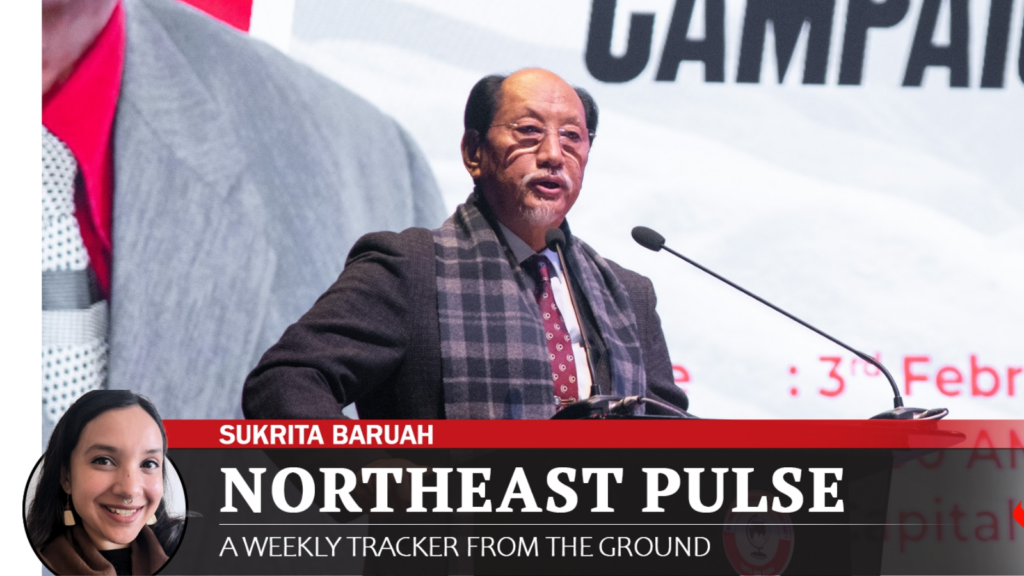With an agitation pushing for ending reservations for “backward tribes” on one side and a demand to increase the quantum of this quota on the other, Nagaland’s nearly five-decade old reservation policy has become the centre of a debate in the state.
This week, the Committee on Review of Reservation Policy (CORRP), a grouping of five tribes in Nagaland, resumed its protest to push for a review of the reservation policy, which provides for an internal quota within the broader ST category for “Indigenous Scheduled Tribes of Nagaland” in government jobs and reserves 37% of posts for tribes identified as “backward tribes”.
The CORRP comprises representatives from the apex bodies of five groups that have come to be called “advanced tribes”: Ao, Angami, Sumi, Lotha and Rengma.
In response to pressure from the CORRP, which has been building up since September last year, the Nagaland government had in March convened a meeting with different stakeholders. Following this, Cabinet minister Neiba Kronu said the government has decided to review the policy.
Two months later, Deputy Chief Minister Y Patton met with the CORRP and said the Cabinet would deliberate on whether a commission on this matter would be set up.
However, there is a roadblock.
The stand of the government, which was expressed by Chief Minister Neiphiu Rio in the state Assembly last year and in a statement last week, is that a review of the reservation policy is only possible after the long-pending national Census is completed. Saying that the government wants to avoid “temporary arrangements” in connection with reservations, Rio told reporters last week: “For any reform in administration or backward reservation or delimitation, it should come after the conduct of the Census.”
There are 14 recognized Naga tribes in Nagaland, and the Scheduled Tribes in the state also include “Indigenous” Garo, Mikir, Kuki and Kachari groups.
The Nagaland government had first introduced reservation for STs of the state in the Nagaland State Services in 1967. The quantum for this was fixed at 80% of vacancies in the Nagaland State Services and 100% of non-technical Grade-III and IV posts.
The element of internal reservations within this reservation was introduced in 1977. Through an order then, 25% of these reserved vacancies were reserved for seven tribes – Konyak, Chakhesang, Sangtam, Phom, Chang, Yimchunger and Khiamunuingan – citing economic backwardness and “insignificant representation in the services”. The 1977 order had laid down a timeline of 10 years for these additional reservations. However, in 1989, through another order, the Nagaland government directed that the reservation policy would continue “until further orders”.
After several changes in the quantum of the reservations for “backward tribes” and the list of tribes entitled to it, the present reservation stands at 25% of all posts under the Government of Nagaland for six tribes from Eastern Nagaland districts – Konyak, Phom, Sangtam, Yimchunger, Chang and Khiamniungan – and another 12% for the Chakhesang, Pochury, Zeliang tribes and the Sumis from Kiphire district.
Now, the other tribes are saying that the reservation policy for backward tribes be entirely scrapped or that the remaining posts be reserved exclusively for them.
“This policy was supposed to be there for 10 years, but it has been there for 48 years. In the past 48 years, there have been six review committees that made various recommendations, one of which was that Chakhesang and Zeliang tribes be removed from the backward tribes list as they have made considerable advancement. But neither were these implemented nor were the other tribes ever included in these discussions,” said G K Zhimomi, the member secretary of CORRP.
Zhimomi said the disparity in Nagaland was “economic” — not because of a rigid social system like the caste system — and called for a policy better suited for Nagaland. He also pitched for a “creamy layer” system as it exists for OBC reservation. Creamy layer is a concept that sets a threshold within which OBC reservation benefits are applicable. While there is a 27% quota for OBCs in government jobs and higher educational institutions, those falling within the “creamy layer” cannot get the benefits of this quota.
Not just the CORRP, calls for a review of the reservation policy have come from different quarters including the Naga Students’ Federation and its lone Lok Sabha MP Congress leader Supongmeren Jamir.
There is also a demand from another quarter: organisations representing tribes from Eastern Nagaland, which have for years been demanding that the backward tribes reservation for the seven tribes from the region be increased to 45%.
The six eastern districts of the state have historically lagged behind in development indices, a regional disparity that was also flagged in the 2016 Nagaland State Human Development Report.
“We are waiting for the government to take a call on this issue but we believe it should be reviewed and that there should be an enhancement (of ST internal quota) for Eastern Nagaland areas. The current policy is not doing justice. Even though it has been in place for so many years, it has been on paper. It does not reflect in the offices where these figures are not being met,” said Eastern Naga Students Federation President Nuheymong.

